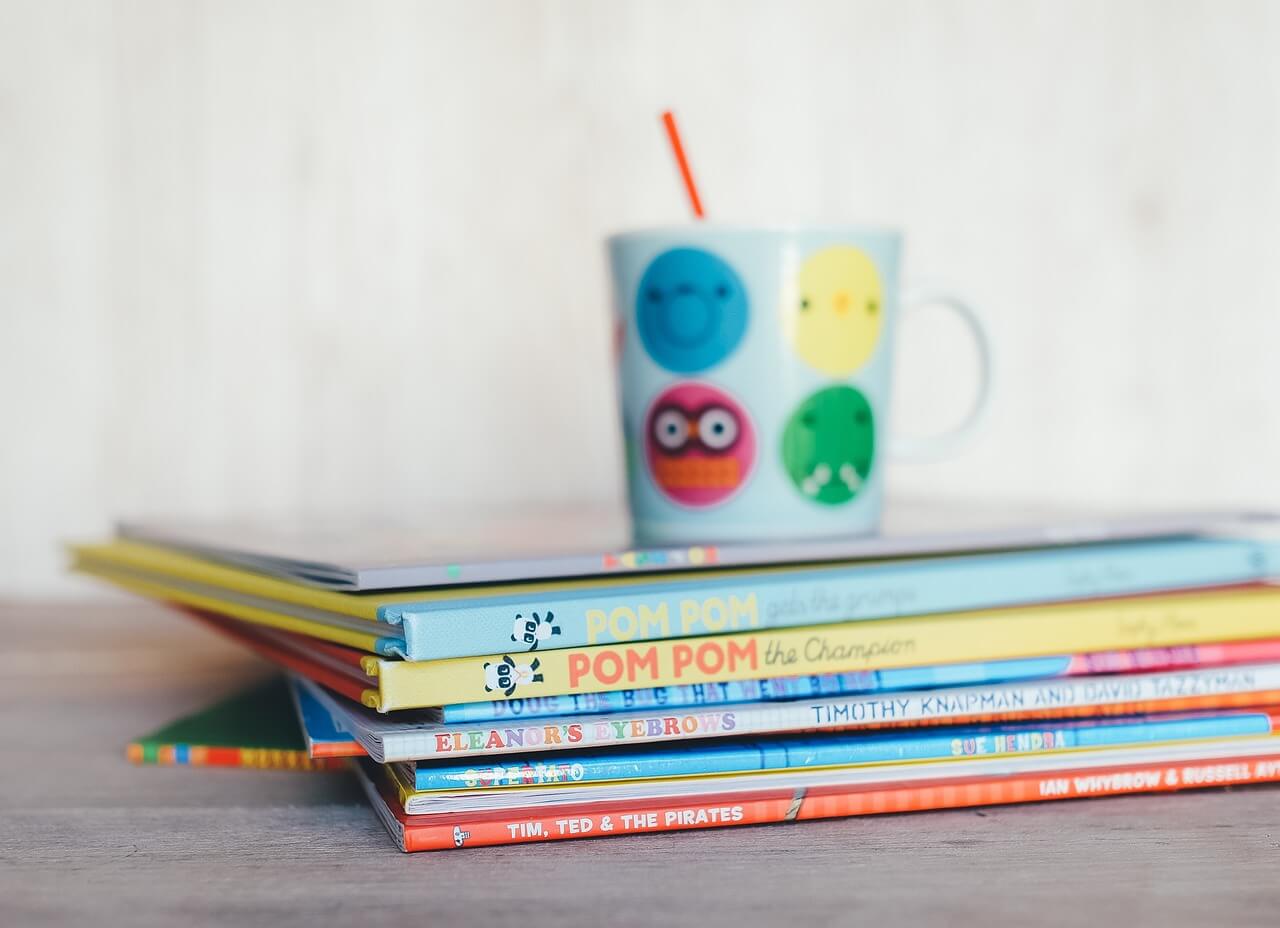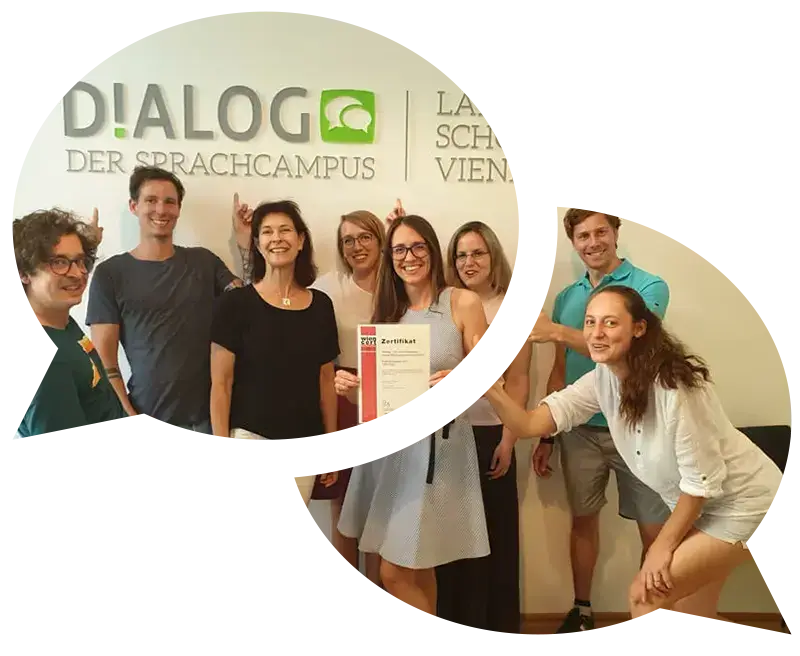Learn German with bilingual books
Here are our recommendations for improving your German or other foreign languages with bilingual books.
1. What are bilingual books?
As the name suggests: Bilingual books are books in which the same text is presented in two languages. There are picture books in two languages for children growing up bilingually, especially in large cities like Vienna. Here the two languages are often graphically separated from each other and the texts are placed above or below each other or next to each other. This is an entertaining & effective support in children’s language development. Adults learning foreign languages in the target country can benefit from such children’s books – not just those with children.
For a long time there have also been bilingual books for adults who are learning foreign languages, mostly short story collections or novels. In these, the text of one language is on the left and that of the other on the right, so that the translations can be directly compared with each other. This way you can understand the text straight away and therefore (usually) don’t need a dictionary. There are many options on the German-speaking market for the “classic school languages” such as English, French or Spanish, but for other languages you have to look a little longer for bilingual books.
2. Use the L-R method correctly
The so-called LR method (L=listening & R=reading) offers an interesting way to work with bilingual books/texts. In addition to the text, you need an audio recording, ideally an audio book . Then you follow these steps:
- First read the translation to get to know the content: one or more pages – depending on your language skills
- Listen to the corresponding audio part and read along in the target language at the same time. Try to understand everything, i.e. every single word. If you succeed, take the next step:
- Listen to the audio again, this time without reading along. If you don’t understand something, look for the unknown word in the text. Once you really understand everything without a book, comes the final step
- Now you completely understand the text and can listen passively: set the audio on repeat and listen to it again and again until you basically know it by heart. Then the next section goes much faster.
The bilingual books are so suitable here because the sentences in the two texts are directly assigned to each other, so that the meaning of the new words is quickly understood. With the L-R method you can expand your vocabulary extensively . You then also learn grammar (albeit indirectly) through sentence structure.
3. Recommendations for bilingual books for learning German
As already mentioned, it is very easy to find bilingual books on the German-speaking market, which are often learned in Austria (e.g. English, French, Spanish). All you need to do is walk to the nearest library (be sure to register!) or bookstore , or click into an online shop. We want to make your search easier with our recommendations:
1. Bilingual books German-English
Many of you, our German learners, speak English very well – perhaps so well that you can rely on bilingual German-English books if you cannot find them in your native language. There is the largest selection here. We liked:
- Classic : the books (novels, short stories) from dtv , e.g. Virginia Woolf: “A Room of One’s Own”
- Nice to look at : Anaconda’s bilingual books, e.g. Oscar Wilde: “The Picture of Dorian Gray”
- Inexpensive in small format : Reclam’s bilingual classics (several languages), e.g. Edgar Allan Poe: “The Murders in the Rue Morgue”
- Alternative method (sentence-by-sentence translation with word explanations): easyOriginals including audio option for the L-R method, e.g. Theodor Storm: “Late Roses”
- With L-R method : Books from forum-sprach-lernen.com, e.g. Arthur Conan Doyle: “The Speckled Band”
2. Bilingual books German-Spanish
Native Spanish speakers from different countries enjoy attending our German courses and quite a few of our other course participants have knowledge of Spanish. That’s why here are our recommendations for bilingual books German-Spanish:
- Classic : the books from the dtv publishing house , e.g. the collection of 7 stories: “La Cuba desconocida”
- Alternative method (sentence-by-sentence translation with word explanations): easyOriginals including audio option for the LR method, e.g. Joaquín Dicenta: “La casa quemada”
- Inexpensive in small format : Reclam’s bilingual classics (several languages), e.g. Federico García Lorca: “Poemas”
- Very pretty : children’s books from Baobab Books, e.g. Samuel Castaño Mesa: “El reloj de mi abuelo”
We can recommend the same sources as in 1) & 2) for bilingual books German-French and German-Italian. For French, we also have “Gaston à Vienne” by Marie-Pierre Garnier as a special tip with local color.
3. Bilingual books German-Turkish
Many young Viennese grow up with these two languages. For this reason, the offer for children (see below) is significantly larger. These options are aimed specifically at adults:
- Classic : the books from dtv-Verlag , e.g. the collection of stories: “Modern Türk Klasikler”
- Lyrical : Dagyeli’s books, e.g. poems by Nâzım Hikmet: “En Güzel Deniz Henüz Gidilmemiş Olanıdır”

4. Bilingual books for children
The selection is certainly the largest here; adults (especially those with children, of course) will also find what they are looking for in the bilingual books for children. (Almost) all languages are represented here, including those not previously mentioned. Our selection for you:
- Free (!) bilingual picture books in many languages and with audio are available at Bilingual Picturebooks, e.g. “Der flammende Fuchs” – Here you choose two languages (German, English, Italian, Spanish, Irish, Low German, Mandarin, Polish , Hungarian, Arabic, Albanian, Portuguese, Indonesian, French, Catalan, Galician, Russian, Romanian, Kurdish, Turkish, Basque, Finnish, Bulgarian, Ukrainian, Farsi, Lithuanian, Greek, Vietnamese, Hebrew, Dutch, Croatian – WOW!) and then receive a PDF. A great offer that you can also take part in yourself.
- There are wonderful bilingual books from different cultural areas, such as the Spanish-German books mentioned above in Baobab Books , e.g. Ukrainian-German “Ripka” by Andriy Lessiv & Romana Roamnyshyn, other languages: Mandarin, Farsi, Korean, Arabic & Georgian .
- There is a wide range of stories and non-fiction books for different age groups at Hueber’s Edition bi:libri , e.g. “Das Allerwichtigste” including audio by Antonella Abbatiello in Arabic, English, French, Greek, Italian, Kurdish, Farsi, Polish, Romanian , Russian, Spanish, Turkish & Ukrainian
- Beautiful books in many languages are also available from Edition Orient (also an Arabic-German series for adults), e.g. “Wer hat mein Eis gegessen?” by Rania Zaghir with audio CD in the languages Albanian, Arabic, Bosnian, Bulgarian, German, English, French, Greek, Italian, Croatian, Kurdish, Persian, Polish, Romanian, Serbian, Spanish, Turkish and Urdu.
- Our tip : “Das kleine Ich bin ich” is a children’s book classic for generations of Austrians, of which the Jungbrunnen publishing house has a trilingual version with German, Arabic & Farsi as well as a four-language version with Croatian, Serbian & Turkish in addition to German.
Melde dich jetzt für einen Deutschkurs in Wien an und lerne effektiv Deutsch in Kleingruppen und mit hochqualifizierten Lehrkräften.
Zu kompliziert? Wir können helfen!
Now you have a lot to do. Feel free to write to us (office@dialog-wien.at ) if you discover something in your language! There is certainly still a lot to find in the (online) shops worldwide. If you want to try out your new vocabulary, why not book a conversation course , for example ! We look forward to your inquiries .
March 2024







